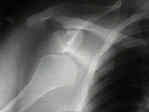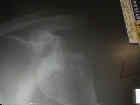- Discussion:
- may be indicated for shoulder instability;
- in the report by Greis PE, et al, the authors evaluated 4 cases in which axillary nerve injury which was observed after radiofrequency capsular shrinkage of the shoulder;
- authors conclude that injury to the axillary nerve during this procedure is possible and postulate that heat penetration through the capsule to the nerve is the most likely cause of injury;
- in the report Mishra DK, et al, the authors studied 42 patients with recurrent traumatic anterior locations;
- patients reported an average of 9 dislocations preoperatively;
- average of 69 months elapsed from initial dislocation to surgery;
- shoulders underwent arthroscopic capsulolabral repair with either a suture anchor and horizontal mattress suture, or an absorbable tack;
- each shoulder also was treated with a monopolar radiofrequency probe for thermal shrinkage of the middle, anteroinferior, and posteroinferior glenohumeral ligaments;
- at a mean of 28 months postoperatively, 38 patients had returned to their preinjury sports;
- 3 patients (7%) had a traumatic redislocation
Axillary nerve injury after thermal capsular shrinkage of the shoulder
Thermal Capsular Shrinkage for Treatment of Multidirectional Instability of the Shoulder.
Prospective Evaluation of Thermal Capsulorrhaphy for Shoulder Instability. Indications and Results, Two- to Five-Year Follow-up.
Chondrolysis Following Arthroscopic Thermal Capsulorrhaphy to Treat Shoulder Instability.



